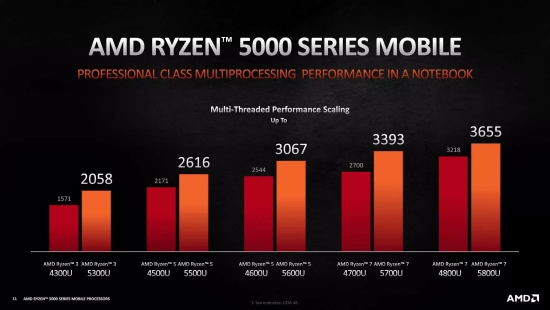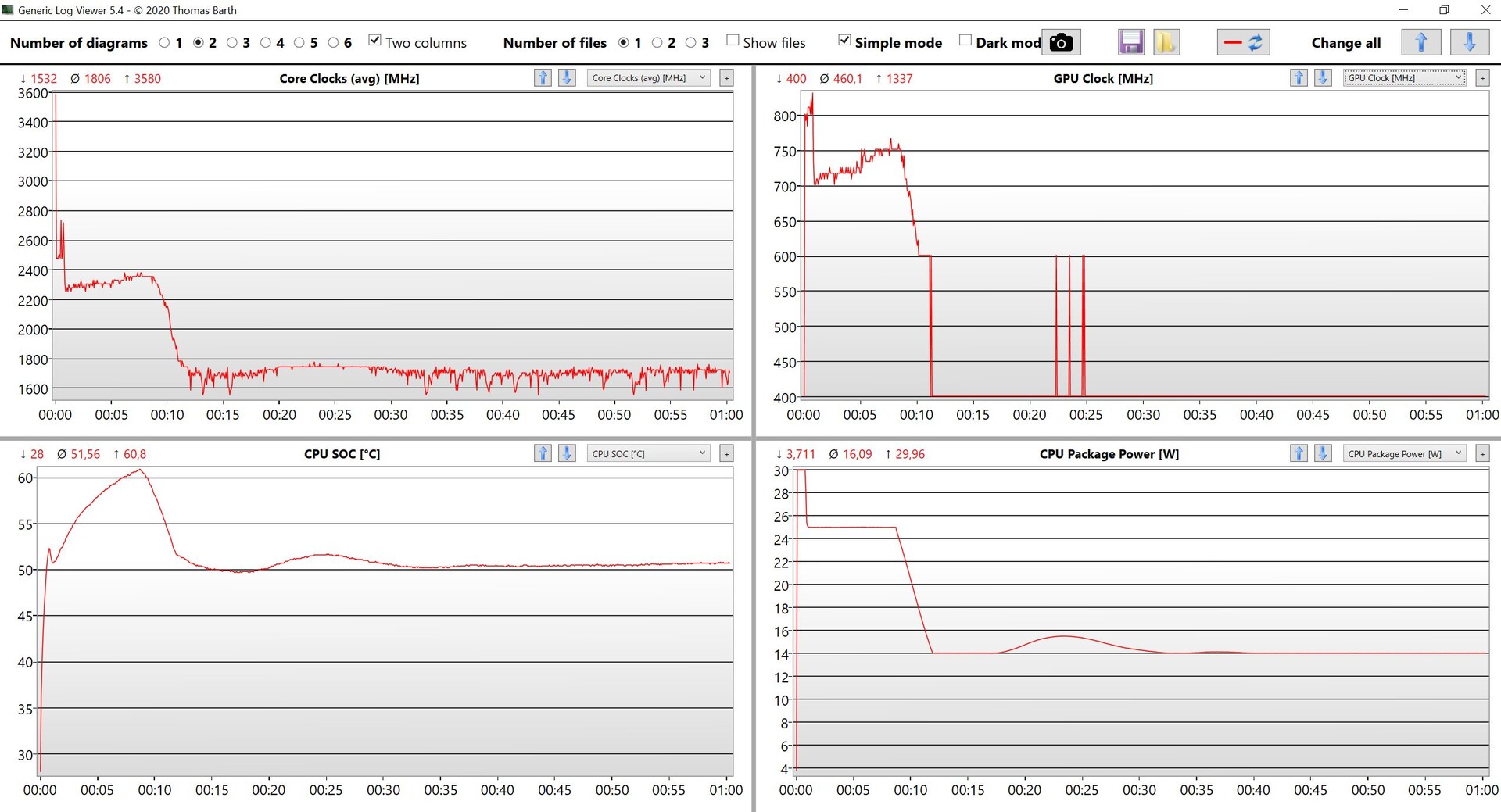Is it? Because that's a whole lot more than '25-30%' faster that AMD themselves claim over the 5800u:
I think the big question is what frequencies ADL mobile will be able to sustain within various power/thermal envelopes?
If 2+8 can sustain 3GHz for P's and E's that would provide CB23 of ~8,850.
If that configuration can sustain 3.5GHz for P/E then that would attain ~10,300.
Even 2.5GHz P/E would score ~7,400, which substantially higher than TGL.
Another bit of information to keep in mind is that at equal frequencies a Gracemont cluster outperforms a Golden Cove core by nearly a 2:1 factor. Assuming approximate area, the E's can be clocked much lower than the P's and still be more efficient.
I think we are going to have to wait for actual tests. We just don't know how this silicon optimized for mobile is going to do when optimized for power at the extreme U mobile envelope. Intel has it work cut out for it determine optimum frequency and core distribution for various workloads. It's a much more nuanced problem than for the desktop since power and heat dissipation are much more limited.
I think we are going to be surprised by how well 2+8 performs in the ultra mobile space. I have a feeling that 2 P's, with 4 strong logical threads are going to be able to carry the bulk of the work for most applications with the E's handling the lighter thread work loads.
Furthermore Intel knew (knows) that mobile is ultimately the most important category so I believe they designed ADL around that in the first place.
We shall see soon enough.






